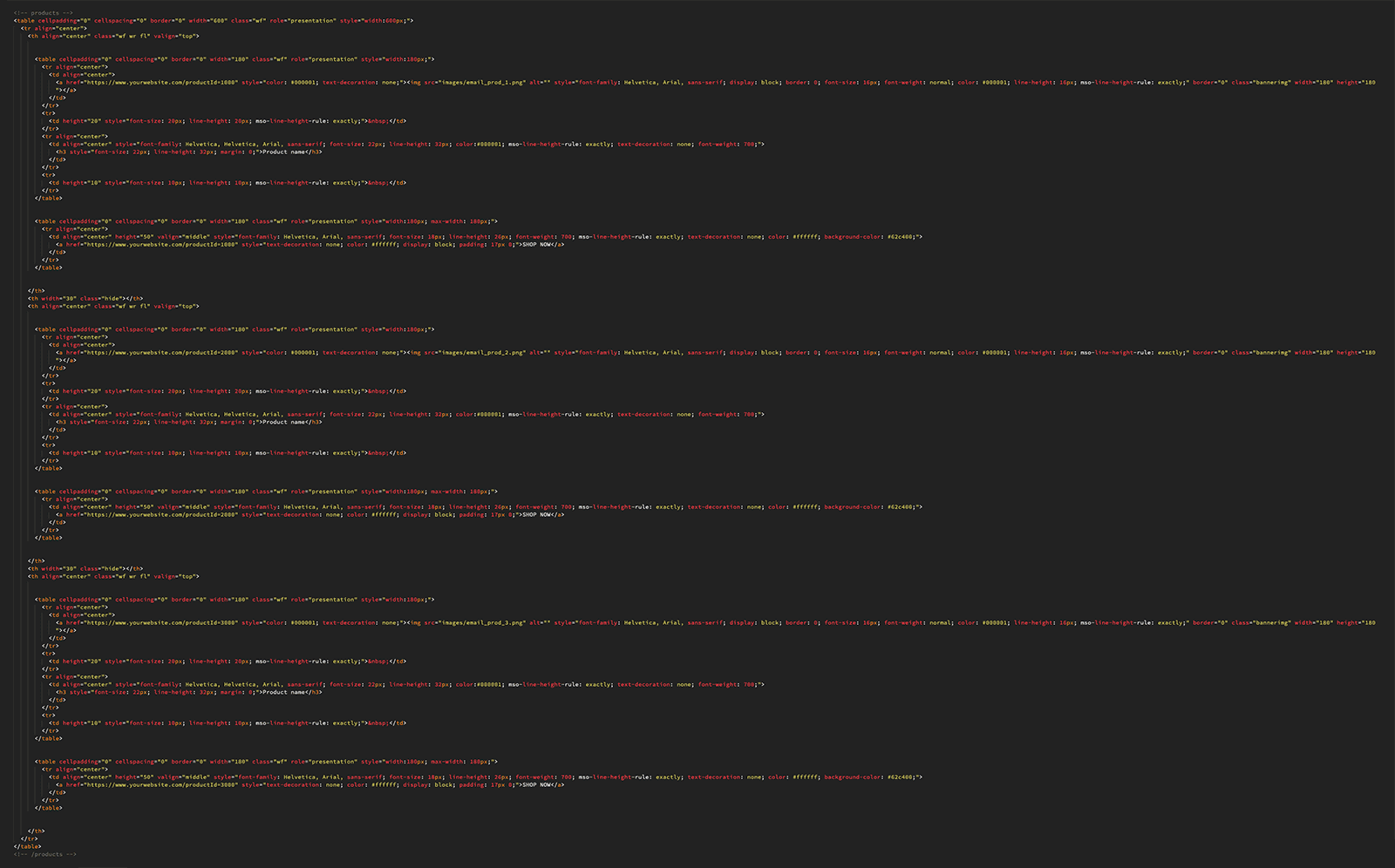It’s a well-known fact that Gmail truncates emails over a certain size. At least I think it’s well-known. There are still plenty of brands out there sending big bulky emails that exceed the limit. Here’s what happens when they do:

Yes, the missing portion is technically still available. Via a click. But let’s be real – who is going to do that?
Keep it under 100
If your email code exceeds around 100KB, you’ve hit the limit. That means the code content of your HTML file only. Images are a separate entity and not a factor in truncation.
Email code is responsible for:
- General template setup and fixes
- HTML elements and their attributes
- CSS, both inline and in the head of your document
- Text content
- Code indentation
But in practical terms, we can consider that 100KB to be shared between just two things:
- Content
- Design
A quick fix
First thing first – you probably don’t want to sacrifice either content or design, and you might not have to. Stripping indentations can make a significant saving in code, and is often sufficient to pull a large email back into safety.

It’s worth pointing out that this technique doesn’t work in all email platforms. Some of them will reformat the code, thus restoring the indentations, and you’re back to square one. Thankfully most don’t do that.
If your email is still over the limit, you might then consider looking for sections of your email that could be coded a little more efficiently. That will shave a few bytes here and there. But frankly, unless your code was terribly bloated in the first place, the savings are going to be negligible. You’re going to have to make a tougher decision.
What matters more?
You have lots of stuff to offer your customer, and you want your customer to see it. And you want it to look pretty too. That’s a problem, because:
lots of content x complex design = too much code
Something has to go. There are a couple of questions to help determine the next step.
Is your design a little too much?
I’ve personally been involved in many a desperate battle to squeeze a marketing email under the limit. And every time I wonder why are we having this fight? Often the problem could be solved by reining in the design to a more medium-appropriate form.
There’s nothing wrong with a good-looking email of course. It certainly doesn’t need to be plain. But there is a point at which the design becomes needlessly elaborate, especially in this medium that requires so many tricks. It’s worth taking a step back and re-examining the design:
- Is it fancy for the sake of being fancy?
- Are links applied to every square inch? Those add up quickly.
- Does it communicate what it needs to?
Are you showing the right content to the right people?
We established already that you have a lot of content that you’d like to promote. Products for every need. Juicy offers aplenty. You name it.
But does every customer need to see all of it? The answer is no. They’re probably not going to peruse your email with the same level of attention with which you created it.
Targeted, relevant content is so much better. That keeps your email focused, without the bloated file size.
A necessary nuisance
Email truncation can feel like a source of frustration. Why would someone interfere with our emails like this!?
But that’s the wrong way to look at it. It provides a benefit to the customer. And really it provides a benefit to us marketers by reminding us about best practice.
So, what gets the chop? Bad practice. And who’d want to keep that?


